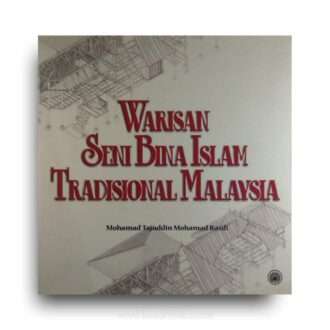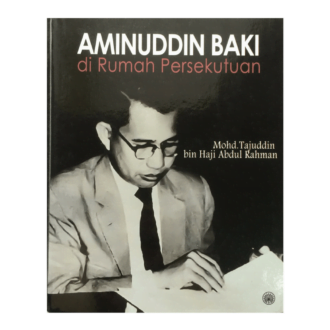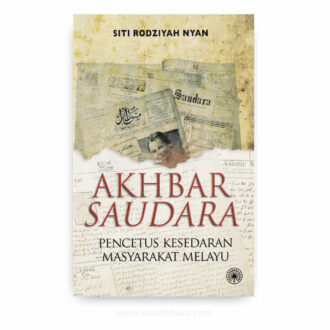Charting the Economy: Early 20th Century Malaya and Contemporary Malaysian Contrasts charts the course of Malaya’s commodity-dependent economy during the first 40 years of the 20th century while under British colonial control, contrasting that course with the economic growth and development in contemporary Malaysia. It asks: What is the economic legacy of British colonialism in the Malay Peninsula, and how differently has the economy performed under national management? By deriving estimates of Malaya’s GDP and its components for 1900– 1939, and analysing trends and their interrelationships, it deepens understanding of the dynamics of economic performance during these four decades.
The study of long-run economic growth in Malaysia in the 20th century had previously been held back by the absence of comprehensive statistical data on national income before World War II. Yet national income accounts are fundamental for measuring and understanding the anatomy and evolution of economies—and for planning and managing them. Today most countries keep detailed national accounts that are routinely compiled by government statistical agencies. Such accounts provide the evidence base for seriously challenging the prevailing views about the efficiency of markets and laissez-faire economic policy.
Sultan Nazrin Shah eloquently articulates how the economy rode a commodity roller-coaster. Being small and open, it was exceedingly vulnerable to external cyclical shocks World War I (1914-1918), the Roaring Twenties (1920-1929), and the Great Depression (1929-1932) which were the main causes of economic booms and busts. As this study makes clear, the economy of the Malay Peninsula was anything but stagnant. Despite the impact of World War I and the Great Depression of the 1930s, Malaya’s economy grew on a real per capita basis at an average of 2.9 per cent a year for nearly four decades. The growth was not steady, however. It was based almost entirely on two commodities, tin and rubber. Commodity prices fluctuate widely and that was certainly the case in Malaya from 1900-1939. The demand for rubber depended on the size and growth of the automobile industry, mainly in the US, and that industry was deeply affected by World War I and even more by the Great Depression.
Charting the Economy: Early 20th Century Malaya and Contemporary Malaysian Contrasts makes a compelling case that the colonial laissez-faire economic system worked well for the agency houses that repatriated huge profits but paid small dividends to the masses. Development was highly uneven, with growth and prosperity concentrated in and benefiting the Peninsulas west coast states, where most of the tin mines and rubber plantations were located. After independence, national control over economic management was accompanied by a long-term vision for a socially just nation. The real GDP growth in post-independence Malaysia brought rapid advances in standards of living.
The colonial authorities adopted a laissez-faire economic system. They gave the British-dominated private sector—plantation and mining companies, agency houses, banks, and middlemen—carte blanche to maximise profits, and provided a supportive legislative and institutional environment. Agency houses were thus able to repatriate substantial profits.
Laissez-faire practices led to highly uneven development, with economic growth and prosperity concentrated in and mainly benefiting the Peninsula’s west coast states. These were the centres of the tin and rubber industries, with better physical and social infrastructure, which served the commercial interests of the export-oriented private sector. A laissez-faire approach also led to high levels of inequality in ownership and control of the economy.
Charting the Economy: Early 20th Century Malaya and Contemporary Malaysian Contrasts fills an important gap for understanding what happened to the Malayan (later Malaysian) economy prior to the country’s independence. The substantial structural changes in that economy were different in kind from the structural changes in the industrialised countries at that time (and earlier). The changes in Malaya, however, did have much in common with the structural changes occurring at the same time in a great many other colonies of European and American powers. Understanding what happened in Malaya is thus a guide to what probably happened in many other places at that time—and to some degree is still happening today, notably in parts of Africa.
The colonial-era did provide Malaysia with what for the 19503 was good infrastructure in the form of paved highways and a railroad system that linked the major centres on the west coast of the Malayan Peninsula, together with electricity and even potable water in the major cities. These were developed originally to serve mining and plantation interests but were equally suitable for many other purposes. Education of a Malaysian elite at the University of Malaya in Singapore (and later in Kuala Lumpur) during late colonial times provided the country after independence with a higher quality civil service than in many other developing countries immediately after independence.
But colonial policies also helped create an economy where occupations were closely associated with race. Chinese Malaysians dominated most of the commerce, construction and industry employment. The Malays were largely confined to farming and, after independence, to the civil service, security and uniformed services, especially the police and military. Living standards, particularly of Malay farmers, were still very low and much lower than those in urban occupations.
In 1969, this situation would lead to riots that traumatised the country and ushered in policies designed among other things to eliminate the connection between occupation and race. Overall the colonial era produced both positives and negatives, and there probably is little to be gained by trying to estimate which outweighed the others. Malaysia at independence was clearly in a better position to launch sustained economic development efforts than most other developing countries, including such neighbours as Indonesia.
Charting the Economy: Early 20th Century Malaya and Contemporary Malaysian Contrasts ends with suggestions about where future research could build on the foundation laid by the estimates and analysis in this excellent study.












Reviews
There are no reviews yet